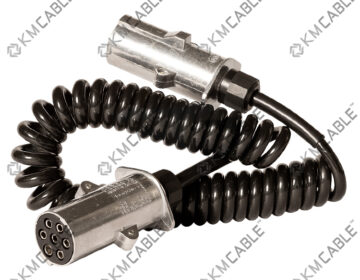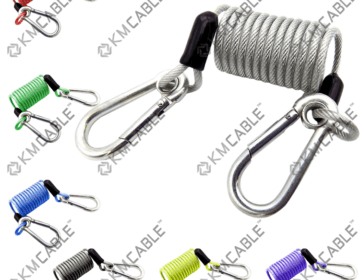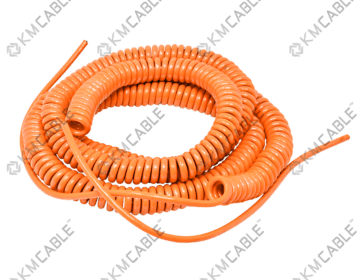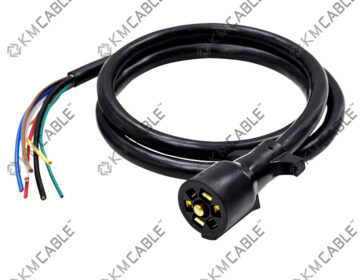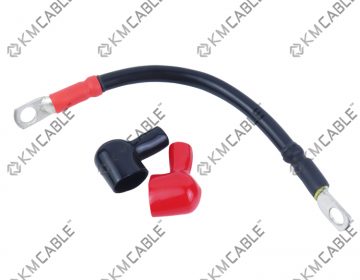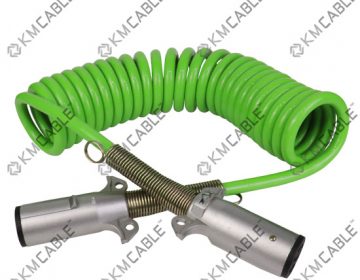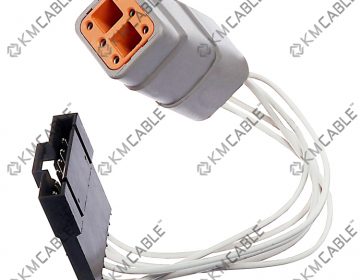
Introduction
In the realm of industrial automation, robot cables play a crucial role in ensuring smooth and efficient operations. As factories and production lines increasingly rely on robotic systems, the importance of high-quality, reliable cables cannot be overstated. These specialized cables are designed to withstand the rigorous demands of automation environments, providing the necessary power and communication links that keep everything running seamlessly. This article delves into the significance of robot cables, exploring their types, materials, features, and best practices for installation and maintenance to ensure optimal performance and safety.
Importance of Robot Cables in Industrial Automation
Robot cables are the lifelines of automated systems, enabling the transfer of power, signals, and data essential for robotic functions. Without robust and reliable cables, robots would be prone to malfunctions, potentially leading to costly downtimes and even safety hazards. These cables are specifically engineered to endure the repetitive motions, harsh environments, and electromagnetic interference commonly found in industrial settings. By investing in high-quality robot cables, industries can enhance the longevity and reliability of their automation systems, ultimately boosting productivity and reducing maintenance costs.

Types of Robot Cables
Power Cables
Power cables are responsible for transmitting electrical energy from the power source to the robot’s various components. These cables must handle high voltage and current levels while maintaining flexibility and resistance to wear.
Signal Cables
Signal cables carry low-voltage signals that control the robot’s movements and operations. They are crucial for accurate communication between the robot’s control system and its mechanical parts, ensuring precise and synchronized actions.
Hybrid Cables
Hybrid cables combine power and signal transmission within a single cable, reducing the complexity and space required for cable management. These versatile cables are ideal for applications where space is limited and efficiency is paramount.
Materials Used in Robot Cables
Copper
Copper is the most common material used in robot cables due to its excellent electrical conductivity and flexibility. Copper cables provide reliable performance and are less prone to corrosion, making them suitable for various industrial environments.
Aluminum
Aluminum cables are lighter and more cost-effective than copper but may have lower conductivity. They are often used in applications where weight reduction is critical, such as in high-speed robotic arms.
Shielding Materials
Shielding materials, such as braided copper or aluminum foil, are used to protect cables from electromagnetic interference (EMI). Proper shielding ensures that signal transmission remains clear and uninterrupted, which is vital for precise robotic operations.
Key Features of High-Quality Robot Cables
Durability
Durability is a fundamental characteristic of high-quality robot cables. In industrial environments, these cables must withstand rigorous conditions, including continuous movement, exposure to chemicals, and extreme temperatures. The outer sheath of durable cables is typically made from materials like polyurethane or TPE (thermoplastic elastomer), which provide excellent resistance to abrasion and mechanical stress. This durability ensures that the cables can endure thousands of bending cycles without significant wear, reducing the need for frequent replacements and minimizing downtime in automated systems.
Flexibility
Flexibility is another critical feature, as robot cables must bend and twist in multiple directions to accommodate the robot’s movements. High-quality cables use finely stranded conductors and flexible insulation materials to achieve this flexibility. The ability to maintain flexibility without compromising structural integrity is crucial for preventing cable fatigue and breakage. Flexible robot cables facilitate smoother motion and precise control, essential for tasks requiring high levels of accuracy and repeatability, such as welding, assembly, and material handling in industrial automation.
Resistance to Interference**
Resistance to interference, both electromagnetic (EMI) and radio frequency (RFI), is vital for ensuring reliable signal transmission in robot cables. High-quality cables are equipped with shielding, such as braided copper or aluminum foil, to protect against these interferences. Effective shielding prevents data corruption and signal loss, maintaining the integrity of communication between the robot’s control systems and its actuators and sensors. This resistance is particularly important in environments with heavy electrical equipment, where interference can disrupt operations and lead to errors or equipment malfunctions.
In summary, high-quality robot cables are defined by their durability, flexibility, and resistance to interference. These features ensure that the cables can endure the demanding conditions of industrial automation, providing reliable performance and contributing to the overall efficiency and safety of automated systems.
Installation Best Practices
Planning
Proper planning is essential for the successful installation of robot cables. This includes selecting the right cables for the application, determining the optimal routing paths, and ensuring that cables are of adequate length to accommodate the robot’s range of motion.
Routing
Cables should be routed in a way that minimizes stress and avoids sharp bends or kinks. Proper routing helps prevent premature wear and reduces the likelihood of cable failure.
Securing
Securing cables properly is vital to prevent them from moving or getting caught in the robot’s mechanisms. Using appropriate clamps, ties, and protective conduits can help maintain cable integrity and performance.
Maintenance Tips for Robot Cables
Regular Inspections
Regular inspections can identify potential issues before they lead to failures. Checking for signs of wear, fraying, or damage can help ensure timely replacements and maintain optimal performance.
Cleaning
Keeping cables clean from dust, dirt, and other contaminants can prevent deterioration and ensure smooth operation. Use appropriate cleaning agents that do not damage the cable materials.
Replacements
Timely replacements of worn-out cables are crucial to prevent unexpected downtimes. Establishing a maintenance schedule and keeping spare cables on hand can minimize disruptions to operations.
Common Problems and Solutions
Wear and Tear
Wear and tear are common issues for robot cables due to the constant movement and harsh environments. Using cables with high abrasion resistance and regular maintenance can mitigate these problems.
Environmental Factors
Extreme temperatures, humidity, and exposure to chemicals can affect cable performance. Selecting cables with appropriate environmental resistance and protective coatings can enhance their durability.
Electrical Interference
Electrical interference can disrupt signal transmission, leading to malfunctions. Using shielded cables and proper grounding techniques can minimize interference and ensure reliable communication.
Role of Robot Cables in Safety
Robot cables play a pivotal role in ensuring the safety of industrial automation systems. By providing reliable power and signal transmission, they help prevent malfunctions that could lead to accidents or injuries. High-quality cables also feature robust insulation and shielding to protect against electrical hazards, contributing to a safer working environment.
Latest Innovations in Robot Cable Technology
Self-Healing Materials
Self-healing materials are an emerging innovation in robot cables. These materials can repair minor damages automatically, extending the cable’s lifespan and reducing the need for frequent replacements.
Smart Cables
Smart cables integrate sensors and diagnostic capabilities to monitor their condition in real-time. These cables can detect issues such as excessive bending, temperature fluctuations, and wear, allowing for proactive maintenance and preventing unexpected failures.
Impact of Robot Cables on Productivity
Reliable robot cables are instrumental in minimizing downtime and enhancing the efficiency of industrial operations. By ensuring consistent power and signal transmission, they help maintain uninterrupted production processes, leading to increased productivity and profitability.
Cost Considerations for Robot Cables
Initial Investment
While high-quality robot cables may have a higher initial cost, their durability and reliability can lead to long-term savings by reducing maintenance expenses and minimizing downtime.
Long-Term Savings
Investing in robust cables can result in significant long-term savings. Reduced frequency of replacements and fewer disruptions to operations contribute to a lower total cost of ownership.
Case Studies of Effective Robot Cable Use
Automotive Industry
In the automotive industry, robot cables are used extensively in assembly lines for tasks such as welding, painting, and material handling. High-quality cables ensure the smooth and efficient operation of robotic arms, contributing to the production of high-quality vehicles.
Electronics Manufacturing
Electronics manufacturing relies on precise and reliable robotic systems for tasks such as circuit board assembly and component placement. Robust robot cables enable these systems to operate with high accuracy and minimal errors, enhancing overall production quality.
Environmental Considerations
Eco-Friendly Materials
Using eco-friendly materials in robot cables can reduce the environmental impact of industrial automation. Biodegradable or recyclable materials help minimize waste and promote sustainability.
Recycling Options
Implementing recycling programs for used cables can further reduce environmental impact. Proper disposal and recycling of cables ensure that valuable materials are recovered and reused, contributing to a circular economy.
Future Trends in Robot Cables
Increased Durability
Advancements in materials and manufacturing techniques are leading to the development of robot cables with increased durability. These cables can withstand even harsher conditions, further extending their lifespan.
Advanced Materials
The use of advanced materials such as carbon nanotubes and high-performance polymers is set to revolutionize the robot cable industry. These materials offer superior strength, flexibility, and resistance to environmental factors.
Selecting the Right Robot Cable for Your Needs
Choosing the right robot cable depends on the specific application and performance requirements. Consider factors such as the type of movement, environmental conditions, and electrical specifications to select a cable that meets your needs.
FAQs
What are the key factors to consider when selecting robot cables?
Important factors include the type of application, environmental conditions, electrical specifications, and the cable’s durability and flexibility.
How do self-healing materials in robot cables work?
Self-healing materials have the ability to repair minor damages automatically, often through chemical reactions or microcapsules that release healing agents when damage occurs.
What are the benefits of smart cables?
Smart cables offer real-time monitoring and diagnostics, allowing for proactive maintenance and reducing the risk of unexpected failures.
How often should robot cables be inspected?
Regular inspections should be conducted based on the usage and environment. Typically, monthly inspections are recommended, with more frequent checks in harsh conditions.
Can robot cables be recycled?
Yes, many robot cables can be recycled. It’s important to follow proper recycling procedures to ensure valuable materials are recovered and reused.
What role do robot cables play in industrial safety?
Robot cables ensure reliable power and signal transmission, preventing malfunctions and electrical hazards that could lead to accidents or injuries.
Conclusion
Robot cables are essential components in the automation landscape, ensuring that industrial operations run smoothly and efficiently. By understanding the types, materials, and best practices for installation and maintenance, industries can safeguard their automation systems and enhance productivity. Investing in high-quality robot cables not only improves performance but also contributes to a safer and more sustainable industrial environment.

